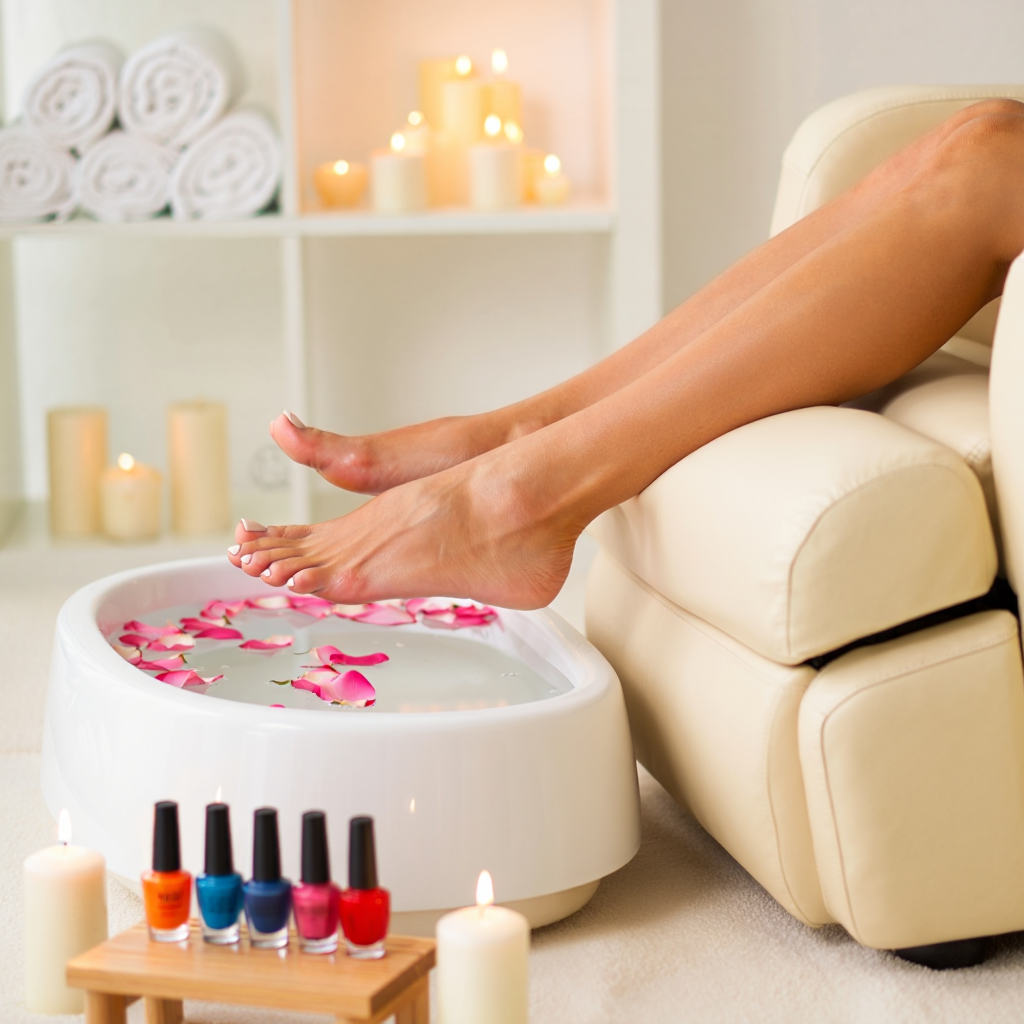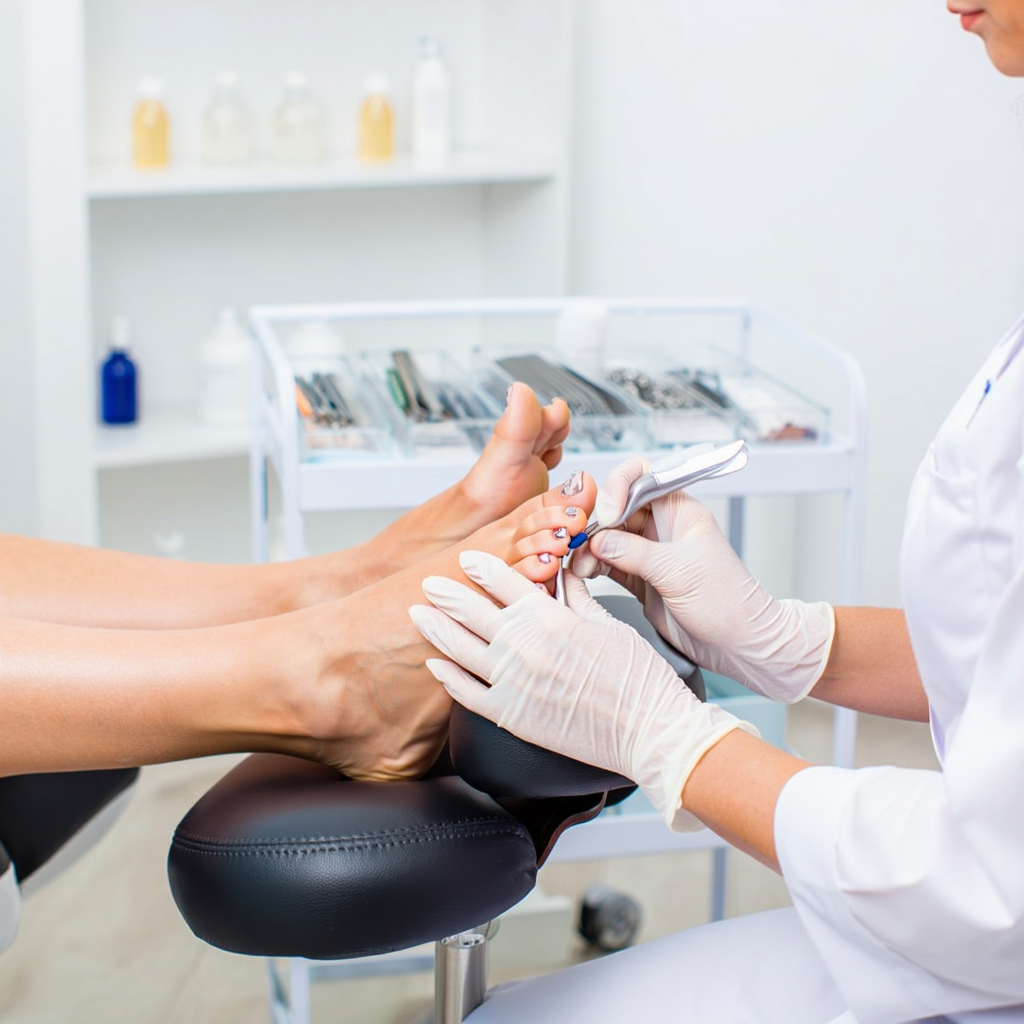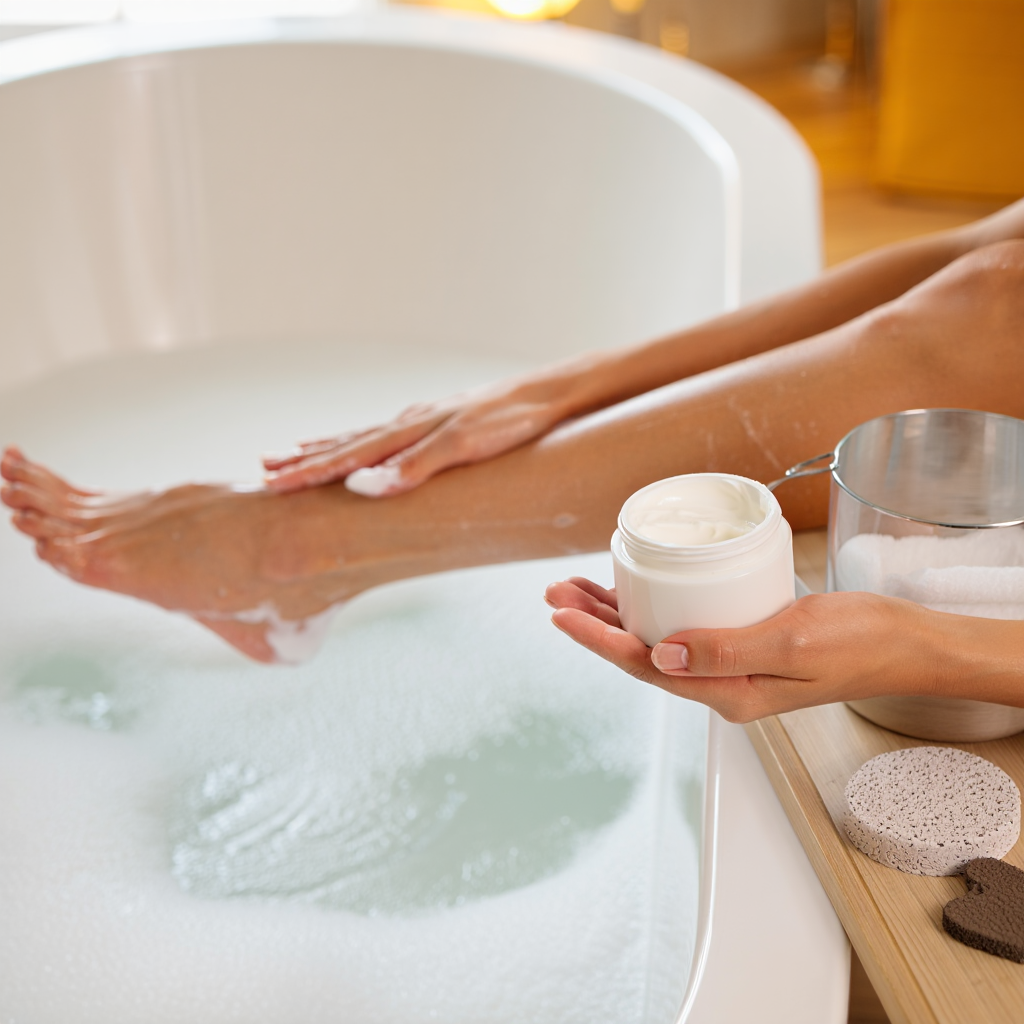Feet take a beating. Think about trudging through a long shift, chasing kids around, or squeezing into tight shoes for a night out. Most people ignore their feet until they’re sore or looking rough. A pedicure can work wonders, but there’s a real difference between a spa pedicure vs medical pedicure. One’s like a treat after a tough week; the other’s for when feet need serious help. This article walks through what each one offers, who they’re best for, how to keep feet happy at home, and how to pick a salon that gets it right. Whether someone’s got cracked heels or just wants to feel a bit fancy, there’s a path to better feet here.

What’s a Spa Pedicure?
A spa pedicure is pure relaxation. Imagine kicking back in a cushy chair, maybe with a coffee in hand, while your feet soak in warm, bubbly water. It’s about making feet look good and feeling great, no doctor’s visit required. Nail techs focus on tidying things up and adding a little polish—literally. For anyone torn between a spa pedicure vs medical pedicure, this one’s all about the pampering.
The Spa Pedicure Process
It kicks off with a warm soak, maybe with lavender oil or fizzy bath salts that smell like a dream. Nails get clipped into a neat shape, no jagged edges. Cuticles are softened with a dab of cream and nudged back for a clean look. A scrub goes after rough spots, like those cracked heels from too many flip-flop days. Some places throw in a hot towel wrap or a paraffin dip that leaves skin crazy soft. A coat of bright polish—say, coral or classic red—caps it off, ensuring polish durability.
Who Loves Spa Pedicures?
This is for people who need a break. Someone gearing up for a beach trip or a wedding might want their toes looking sharp. It’s not about fixing big problems—it’s about feeling like you’ve got it together. Folks with no major foot issues love the vibe. A spa pedicure vs medical pedicure is the choice when you want to chill, not solve a health puzzle.
Cost and Time Commitment
Prices usually land between $30 and $80, depending on the salon’s vibe or extra perks like a longer massage. The whole deal takes about 45 minutes to an hour. For those wondering how often to get a pedicure, every four to six weeks keeps nails neat and heels smooth. It’s a low-effort way to stay polished. Plus, it’s a chance to sit still for a bit, which is rare these days.
Medical Pedicures Explained
A medical pedicure is about getting feet back in fighting shape. It’s done by pros like podiatrists or specially trained techs who know their stuff. This isn’t about candles and soft music—it’s for real issues like ingrown nails or tough calluses. For anyone weighing a spa pedicure vs medical pedicure, this one’s about health first. It’s a go-to for things like diabetic foot care pedicure needs.
What Happens During a Medical Pedicure?
Here’s what makes it different:
- Sterile setup. Tools are cleaned like they’re going into surgery to keep infections at bay.
- Close inspection. The pro checks feet for things like fungus or odd bumps.
- Careful work. Calluses and corns get shaved down with precise tools.
- Nail fixes. Ingrown or thick nails are handled with care.
- Polish optional. The focus is function, but some spots offer a quick coat if asked.
It feels more like a checkup than a spa day. For those hunting for a pedicure near me with callus removal, this is the real deal. The goal is healthy feet, not just a pretty finish.

Why Choose a Medical Pedicure?
This is for folks with nagging foot problems. Diabetes, fungal issues, or deep cracked heels need more than a quick scrub. A diabetic foot care pedicure keeps things safe by avoiding risky cuts. The sterile setting cuts down on complications. It’s the best pedicure for cracked heels when they’re more than just dry skin.
Who Should Get a Medical Pedicure?
Picking between a spa pedicure vs medical pedicure depends on what’s going on with someone’s feet. Some need a pro to sort out real issues, while others just want a splash of color. Certain health conditions or lifestyles scream for the medical route. It’s about fixing what’s wrong, not just making things look nice. Here’s who should go for it.
People with Diabetes
Diabetes makes foot care a big deal. Poor circulation or numb spots can turn a tiny cut into a serious problem. A diabetic foot care pedicure uses gentle techniques to trim nails and smooth calluses. Pros steer clear of tools that might nick skin. They also keep an eye out for early trouble, like sores that could get worse.
Those with Chronic Foot Issues
Folks with ongoing problems—like ingrown nails that hurt to touch or calluses that feel like rocks—need a medical pedicure. Deep cracked heels can split open if not handled right. This approach digs into the cause, not just the surface. It’s a solid pick for lasting relief. A pedicure near me with callus removal is perfect for these stubborn spots.
Table: Spa vs. Medical Pedicure for Specific Needs
| Condition | Spa Pedicure | Medical Pedicure |
| Diabetes | Not recommended | Highly recommended for safety |
| Ingrown Nails | Limited help | Expert correction |
| Cracked Heels | Temporary relief | Targeted treatment |
| Fungal Infections | Not addressed | Professional care |
| General Maintenance | Great for aesthetics | Overkill for healthy feet |
Active Individuals
Runners, dancers, or anyone on their feet all day deal with blisters or tough skin buildup. A medical pedicure smooths out those rough patches and keeps feet ready to move. It’s a great choice for a pedicure near me with callus removal. The focus is on keeping feet functional, not just cute. Busy folks who push their feet hard find this practical.
When to Stick with Spa Pedicures
If someone’s feet are in good shape, a spa pedicure does the trick. It keeps toes looking fresh without needing a clinical deep-dive. Those without health concerns can skip the medical route. A spa pedicure vs medical pedicure is the simpler pick for routine care. It’s all about a quick refresh, no fuss.
At-Home Foot Care Between Pedicures
A pedicure isn’t enough to keep feet in top shape. Doing a little work at home stretches the benefits of any salon visit. Simple habits keep skin soft and nails under control. Whether someone picks a spa pedicure vs medical pedicure, these tips make a difference. They also mean fewer trips to the salon.
Daily Foot Care Routine
Here’s a no-fuss plan:
- Wash feet daily with gentle soap. Dry them well to avoid fungal trouble.
- Slather on a thick cream before bed. Focus on heels and dry spots.
- Stick to breathable shoes. Skip tight ones that pinch or rub.
- Clip nails straight across. This keeps ingrown nails at bay.
- Rub a pumice stone on heels weekly. It stops calluses from getting out of hand.
This routine takes a few minutes but saves hassle later. For those wondering how often to get a pedicure, these habits can push visits to every six or eight weeks. It’s a small effort for big results.

Handling Minor Foot Issues
Little problems like dry patches don’t always need a salon trip. A warm soak with Epsom salts loosens up tough skin. A quick pass with a foot file keeps heels smooth. For cracked heels, a cream with urea or lactic acid heals and hydrates. These steps keep minor issues from turning into big ones.
When to See a Professional
If home fixes don’t cut it, a medical pedicure is the next step. Deep cracked heels or constant pain need a pro’s touch. People with diabetes should always check with a podiatrist for any concerns. A diabetic foot care pedicure is safer than guessing at home. Regular visits to a specialist keep feet on track.
How to Choose the Right Salon
Finding a good salon isn’t always easy. Some places shine, others cut corners. Whether it’s a spa pedicure vs medical pedicure, the salon choice matters. A great one delivers quality without risks. Here’s how to spot a winner.
Check for Cleanliness
Cleanliness is non-negotiable. Good salons sterilize tools like they’re prepping for surgery. Foot baths should have disposable liners or be scrubbed between clients. If the place looks messy, it’s a red flag. Ask about their cleaning routine to ensure a safe pedicure near me with callus removal.
Look for Trained Staff
Spa pedicure techs should know their way around nails and massages. Medical pedicures need podiatrists or certified pros. Ask about their training, especially for diabetic foot care pedicure services. Skilled hands make all the difference. It’s worth confirming they’ve got the right experience.
Read Reviews and Ask Questions
Online reviews paint a picture of a salon’s track record. Check for comments on hygiene, staff skills, and overall experience. Call and ask about specific needs, like callus removal or diabetes-friendly care. A solid salon won’t dodge questions. This helps find the best pedicure for cracked heels or other concerns.
Consider the Vibe
A spa pedicure should feel like a getaway. Soft lights, comfy seats, and mellow tunes set the mood. Medical pedicure spots might be more clinical but should still feel welcoming. Popping in beforehand shows if the place feels right. It’s a big part of enjoying the visit.
In the video you can see what equipment is used in salons and how the process of medical pedicure takes place, taking into account the rules of sterility and medical laws.
Figuring out whether to go for a spa pedicure vs medical pedicure depends on what feet are asking for. Spa pedicures are a treat, perfect for healthy feet that just need a glow-up. Medical pedicures tackle tough stuff like cracked heels or diabetic foot care pedicure needs with pro-level care. At-home habits keep feet in shape between salon trips. Picking a solid salon ensures the job’s done right. For those wondering how often to get a pedicure, four to eight weeks works if you stay on top of care. A little attention goes a long way for happy feet.
